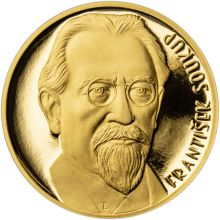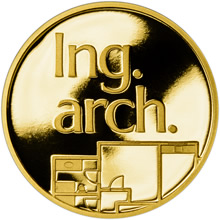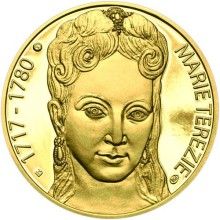FORSTER, JOHANN MARTIN (Germ.). Mint-master at Nuremberg, circa 1755-1774. He was still living in 1778. The coins issued by him bear his signature F, or M.F. Bibliography. — Ammon, op. cit., p. 98, n° 251. — Schlickeysen-Pallmann, op. cit.
Source: Biographical dictionary of medallists; coin, gem, and seal-engravers, mint-masters, ancient and modern, with references to their works B.C. 500-A.D. 1900; compiled by L. Forrer, London 1904
Source: Biographical dictionary of medallists; coin, gem, and seal-engravers, mint-masters, ancient and modern, with references to their works B.C. 500-A.D. 1900; compiled by L. Forrer, London 1904
Mint master:
In medieval and early modern Germany, the Münzmeister ("mint master", the Latin term is monetarius) was the director or administrator of a mint, a moneyer with responsibility for the minting of coins, or specie. His duties were defined differently at different locations and ages.
FABIO, F.
FABIO, F. (Ital.). Misread signature, FA.MANT.AQV. of the Roman sculptor, FABIUS MARCI ANTONII AQUILI, who was a grand-son of the celebrated painter Antonazzo Aquilio, who flour- ished under Sixtus IV. This medallist worked during the second half of the sixteenth century; the only medal known by him com- memorates Hadrianus Caesander, priest and jurisconsult (1598); a specimen exists in the British Museum. Bibliography. — Alfred Armand, Les Médailleurs italiens des XV et XV si?cles, Paris, 1883-...
[ More about FABIO, F. ]
FABIO, F. (Ital.). Misread signature, FA.MANT.AQV. of the Roman sculptor, FABIUS MARCI ANTONII AQUILI, who was a grand-son of the celebrated painter Antonazzo Aquilio, who flour- ished under Sixtus IV. This medallist worked during the second half of the sixteenth century; the only medal known by him com- memorates Hadrianus Caesander, priest and jurisconsult (1598); a specimen exists in the British Museum. Bibliography. — Alfred Armand, Les Médailleurs italiens des XV et XV si?cles, Paris, 1883-...
[ More about FABIO, F. ]
FABRIS, ANTONIO
FABRIS, ANTONIO (ltd.). Venetian Coin-engraver and Medallist of the first half of the nineteenth century ; he was employed at the Mint of Venice from about 1827, and in 1856, when he struck a medal commemorating the visit of the Emperor and Empress of Austria to Venice, he still filled the same post. This artist was born at Udine, learned the goldsmith's art, and first worked at Flo- rence, where he came in 1823. By him are several Portrait-medals of the great sculptor Canova, which count amongs...
[ More about FABRIS, ANTONIO ]
FABRIS, ANTONIO (ltd.). Venetian Coin-engraver and Medallist of the first half of the nineteenth century ; he was employed at the Mint of Venice from about 1827, and in 1856, when he struck a medal commemorating the visit of the Emperor and Empress of Austria to Venice, he still filled the same post. This artist was born at Udine, learned the goldsmith's art, and first worked at Flo- rence, where he came in 1823. By him are several Portrait-medals of the great sculptor Canova, which count amongs...
[ More about FABRIS, ANTONIO ]
FACCIOLI, GIROLAMO
FACCIOLI, GIROLAMO (Ital.). Bolzenthal quotes this artist, whose name is also found as FACIUOLI, a native of Perugia, who worked between 1530 and 1574, as a clever Goldsmith, Copper plate-engraver, and Medallist. The author above-mentioned adds that Faccioli the Elder must be distinguished from his son, who flourished during the second half of the sixteenth century. Benvenuto Cellini refers to the elder Faccioli in his Autobiography, and says that he worked from designs by Francesco Mazzola. We ...
[ More about FACCIOLI, GIROLAMO ]
FACCIOLI, GIROLAMO (Ital.). Bolzenthal quotes this artist, whose name is also found as FACIUOLI, a native of Perugia, who worked between 1530 and 1574, as a clever Goldsmith, Copper plate-engraver, and Medallist. The author above-mentioned adds that Faccioli the Elder must be distinguished from his son, who flourished during the second half of the sixteenth century. Benvenuto Cellini refers to the elder Faccioli in his Autobiography, and says that he worked from designs by Francesco Mazzola. We ...
[ More about FACCIOLI, GIROLAMO ]
FACIUS, ANGELICA
FACIUS, ANGELICA (Germ.). Gem-engraver and Medallist ; daughter of F. W. Facius ; pupil of Rauch ; born in 1806, died at Weimar in 1840. Trained by Rauch of Berlin, she surpassed her father in skill, and some of her productions are not without merit. By her are the following medals : Goethe, 1825; — Death of the Grand Duke of Saxe-Weimar, 1829; — Prof. Benedict Wilhelm's Jubilee, 1836; — and other commemorative pieces of local interest. Her signature is generally F or sometimes also ANG. FACIUS....
[ More about FACIUS, ANGELICA ]
FACIUS, ANGELICA (Germ.). Gem-engraver and Medallist ; daughter of F. W. Facius ; pupil of Rauch ; born in 1806, died at Weimar in 1840. Trained by Rauch of Berlin, she surpassed her father in skill, and some of her productions are not without merit. By her are the following medals : Goethe, 1825; — Death of the Grand Duke of Saxe-Weimar, 1829; — Prof. Benedict Wilhelm's Jubilee, 1836; — and other commemorative pieces of local interest. Her signature is generally F or sometimes also ANG. FACIUS....
[ More about FACIUS, ANGELICA ]



